-
Posts
210 -
Joined
-
Last visited
Content Type
Profiles
Forums
Articles
Gallery
Downloads
Events
Posts posted by Cavpilot2k
-
-
12 minutes ago, Frosty said:
I think that lays it out pretty clearly.
#1, Is the hawk a user or wall hanger? If it's a user just keep it oiled, the temper colors WILL abrade off. A wall hanger would probably benefit from one of the clear coat paints recommended by Das.
I'm no chemist but I do not see how an oxide layer could prevent or inhibit oxidization significantly. Even Core-10 rusts just not as fast.
Frosty The Lucky.
MY hawk , anyway, is meant as a user.
Regarding oxide layers inhibiting rust. I could be wrong, but I've always operated under the impression that if a piece of steel is already covered in one form of oxide, that (preferred) oxide will occupy some of the molecular bonds that allow for rust-type oxide. Basically pre-oxidizing it with a non-destructive and preferable preventative oxide layer. Just like the patina that builds on kitchen blades and darkening from acid etching - they serve as a mild rust-preventative when compared to a "raw" polished steel.
Again, I am no metallurgist, and I don't completely understand the chemical process, but it is conventional "wisdom"(which isn't always true) that oxide patina helps inhibit rust. I figure tempering oxide colors are a form of such preferable oxide.
If I am wrong on this, somebody please correct me!
-
3 hours ago, Frosty said:
Looks pretty good. Temper colors are oxide colors and wont last if you don't protect them. I don't know if there's a good finish for it though.
Frosty The Lucky.
Thanks.
I just oiled it. I know it may not stay, but since they are oxides, I figured not only do I like the look vs polished, they might help inhibit rust.
3 hours ago, jlpservicesinc said:Looks very good indeed.
Sales or personal?
Thanks.
Planning to sell it unless I gift it to someone. I've made a few prior, but this is the first one I've felt nice enough to actually sell (I think it's my 3rd or 4th).
-
-
On 6/28/2023 at 11:25 AM, Frosty said:
Knowing those are worn out and to be used for knife stock still doesn't prevent the cringe from running down my spine at seeing files stacked together. I'm not faulting you for it but it still makes me cringe.
Nothing ruins good files like stacking them so they can bang and rub on each other. One of the farriers I get them from tosses old ones in a bucket and gives me the same cringe reaction every time I bum a couple. He knows and it gives him a chuckle. A cringe is a small price for good steel eh?

Frosty The Lucky.
Yeah, I don't worry about it since I don't care if the burrs are sharp or not, but I am constantly amazed at how sharp these things still are when the farriers discard them. I get cut on these things all the time when I pick them up. I've kept a few aside for hot rasping and wood shaving, because they are so sharp still. Hey, their loss is my gain, because I get them for free.
On 6/28/2023 at 2:48 PM, George N. M. said:Cavpilot, how do you handle the teeth on the rasps? Do you grind them off or do you incoporate the teeth as a design feature (like Thomas' rasple snakes)?
GNM
I do both because they lend to very different patterns. If grinding them off to get the open triangle pattern, I anneal them first. If leaving them on and hammering down for a fish/snake scale look, obviously that gets taken care of in the forge.
-
Another stack of rasps from my local farrier. I've been doing a series of knives and rasp hawks with them.
And yes, I always confirm they are good steel, since many are case-hardened. But the two farriers I get them from always buy high end rasps, usually Heller blue and green tang. I know some have said that they have come across case hardened Hellers, but every one I have gotten from my sources has tested out very good. They run $30+ each for the farrier, versus less expensive for the case-hardened.
My test, which I do on every rasp before I use it (unless it is from the same lot number as a previously tested one) is to cut off the tang, heat it to orange, quench in water, put in a vise and whack it with a hammer (using eye pro). If they snap cleanly they are good to go.
For knives I make from them I had been using Parks AAA, but have moved to Parks 50 for slightly better hardening.
-
From a merit badge counselor perspective, I am not in and don't intend to be in that role. The friend who asked me to do it is the official counselor. I am merely the subject matter "expert" with the facilities to do the hands-on portion (they have already completed much of the "academic" work).
-
Appreciate the advice to talk to homeowners insurance people.
There will/would be several other adults there, from scout leaders to some of the parents and I have already said ear and eye pro are non-negotiable as well as leather gloves (I don’t wear them, but I accept getting burned by hot scale).
Still undecided if I am going to do it but I will check with my insurance company in the AM.
-
A friend approached me about a scout troop he is working with and there is a metalworking merit badge that nine of their older scouts are trying to get.
A portion of it requires hands-on forging basic skills like drawing, bending, and twisting.
I want to help out, but I have concerns about liability because I am not set up with my own insurance or LLC for my forge.
They have all signed activity waivers and whatnot, but in the event something were to go wrong and someone wanted to sue, I fear I would probably be vulnerable, even with liability waivers in place.
Two questions:
A: Thoughts on my vulnerability to liability in the event of a mishap?
B: Is there anyone else in the area (south shore region of Mass) who is better established who would like to help the Boy Scouts?
(caveat: they ideally want to do this thing this weekend, but could push it for a better venue).
-
Thanks all for the input.
I do have some spare old leaf spring lying around, so I will still probably use that, but I won't overdo it.
-
Question for the gallery about that post vise above: I see it is missing its normal spring. I have one a friend gave me for free that is also missing its spring.
My plan has been to fabricate a new spring from a length of good steel, heat treat it, and bring it to a nice blue/purple temper for springiness. For Size and shape of the spring, I will just mimic the spring on the intact post vise I have.
Are there any pitfalls with this plan that I don't foresee?
-
So I have to clean it up still (just a little wire brush), but here is the Trenton I picked up last week.
Based on its size, I thought it was heavier, but it weighed in at 190 even. It is 30.5 inches long!
Nice edges and excellent condition. I haven't found the serial number yet because I haven't cleaned it, so I can't date it (I don't have AiA anyway).
-
George - Cool! They had done away with the AO program by the time I got in (mid 90's). I flew the OH-58 A/C both in flight school and in the MA National Guard years after my active duty time in the D model. It was a fun, basic, stick-and-rudder type aircraft, but the D model with its 4-bladed rotor and more powerful engine was a real sports car (until you put a combat load in it). It didn't have top-end speed, but was incredibly agile due to the rotor system. Like driving a Lotus versus a Lamborghini (OH-58D vs, say, Apache or Blackhawk).
Yeah, I guess flying in combat in a very vulnerable position does alter your perspective on things. I can't tell you how often I've had people ask "so the glass all around the cockpit is bulletproof, right?" I have to laugh at their faces when I tell them it's just plexiglass and probably wouldn't stop a pellet gun projectile. When they ask what I did, I say "my job was to go find the bad guys before the bad guys find the good guys, and arrange to make them dead, whether by my own ammunition or someone else's (preferable)". Such is the life of a scout. And a lot of my friends didn't make it out. THat's the job we chose.
Oh well, that was another life ago. Now I am retired from that, work with computers to pay the mortgage and forge trinkets, tools, and medieval weapons and armor because I am a military history buff. Ain't life grand?

-
14 hours ago, Charles R. Stevens said:
Yep, uppity pilots, lol. when you were a ground pounder, helicopters all look the same
Well, you have the one that looks like two palm trees mugging a dumpster, the one that blows stuff up, the one that delivers chow, and the little mosquito-looking one that skims the treetops like they're looking for lost keys (that was me).
-
What do you mean "you folks"?!?!?! I flew no air taxi!!!

 My aircraft only a two-seater - no passengers or crew chiefs on board, just 2 pilots (armed aerial recon - see profile pic of OH-58D).
My aircraft only a two-seater - no passengers or crew chiefs on board, just 2 pilots (armed aerial recon - see profile pic of OH-58D).
-
George,
Thomas is correct. See below for specs from the current owner of the production facility and link to the B3.
Mittler Brothers bought all of the patents and original tooling equipment from Beverly and are now the official producer of Beverly shears. The B3 new is $1445. Used I usually see them around $800-$100.
In addition to the gauge reference, it will cut up to 3/16" bar stock. The B2 is a little cheaper but with less cutting capacity, and the B1 is less still, but IMHO only suitable if you are doing thin sheet, like aircraft body work.
[commercial link removed]
- 7 Ga mild steel capacity
- 10 Ga stainless steel capacity
-
I've always wanted a B2 Beverly shear, but they are SO xxxxxx expensive. I came across this B3 offered to me at the embarassingly low price of $300 about a year ago and it was a no-brainer.
I was immediately offered $600 for it, but despite the opportunity to double my money, I knew I would never again find a Beverly shear, least of all a B3, at anywhere close to that price.
-
Did some cleaning and maintenance, including blade replacement on my second-hand B3 Beverly shear.
mine of the bolts on the upper blade was stuck fast to the point the female Allen socket stripped out, so I had to weld a more formidable shank into it to get it to break loose (thank God, because the next step was to drill it out and I was not looking forward to that).
Then I used it to cut out the parts for a Churburg 13 - inspired cuirass.
And yes, I built a mounting plate with shank to turn my Beverly shear into a hardy tool.
-
Agreed, Thomas.
many “persona” is that of an established Karl.
my kit is a helmet, mail coat, spear, axe, shield, and seax, all of which I made myself except for the mail coat, which I have modified (it’s a PITA making or modifying riveted mail).
Here is my full kit. The main ahistorical aspect is the footwear, but the rest is fairly authentic to a landed Karl.
Adding a rawhide rim to the shield is my next upgrade.
Oh, and a horizontal sheath for the seax.
-
And a cool warhammer it is. Definitely modern, but I like the crow's beak.
Lots of people still have the faulty notion, perpetuated by fantasy, even modern fantasy like GoT, that a war hammer is some huge heavy thing.
Technically those huge heavy things are mauls.
-
All true enough about support personnel, but I'm not sure being shiny was a priority on viking raids. Rust-free and clean, absolutely, but I feel a bit of patina on a well-used helm in the tenth century is appropriate. Besides, I like the look better than bright polished.
-
Maintenance (service and repair) is one set of folks - those are the crew chiefs.
Arming/ reloading is another (armament dogs)
Fueling is yet another (fuelers).
Each is its own Military Occupational Specialty (MOS) in the army.
So in theory, there is a whole team of squires, but the focus is keeping things functional, not pretty.
-
And when it comes to repairs, sometimes a piece of armor became too damaged to repair. Plate was then often cut up to make the pieces of a brigandine. We know this because many surviving brigs have pieces of plate of varying thicknesses and ages, indicating they were made from scrap and remnants of damaged contemporary plate armor.
OP: Is there a reason you are using copper rather than steel?
-
Cool. KNives are one of those things where each one is a little better than the last. It took me a dozen or so before I started to think they might be worth asking money for, and probably another dozen before I felt good enough about them to start asking enough money to really be worth my time.
That said, some of the ones not suitable to ask people to pay for can still be useful. The third knife I ever made is my go-to small kitchen knife and gets used several times a week. It is ugly and crude, but that doesn't mean it isn't useful as a cutting tool.
-
Honestly?....
I like it a lot. the only thing I don't LOVE about it is that I would preferthe handle and spine be more in line, BUT for a second knife, it's quite good.
WHat is it made from? I see some remnants of stamped lettering.


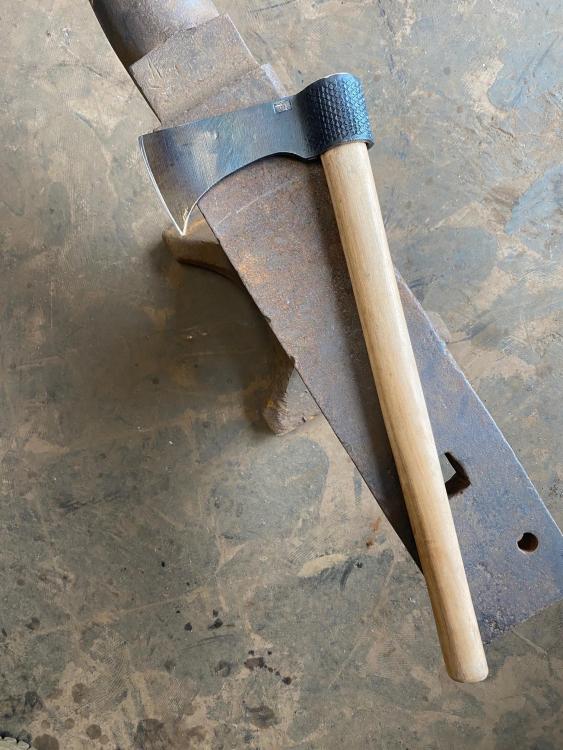
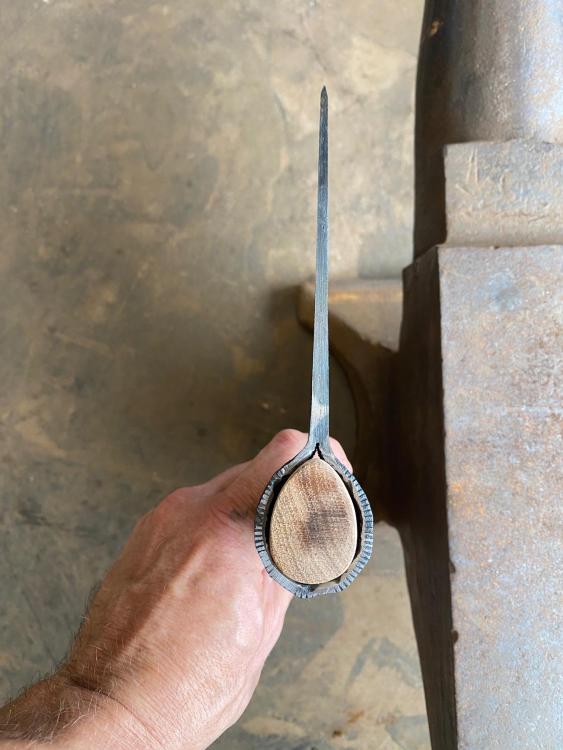
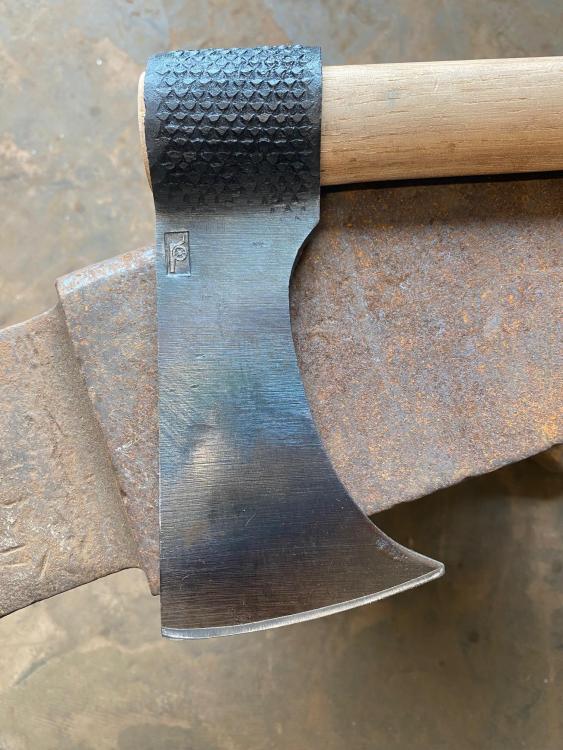
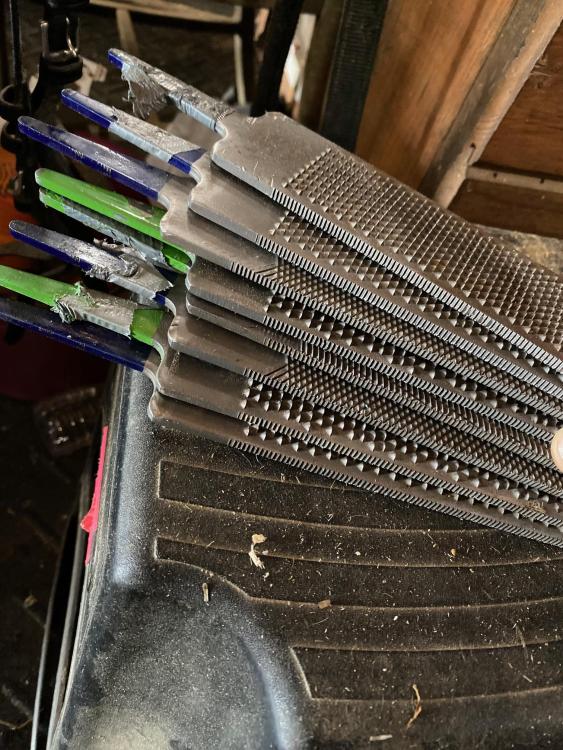

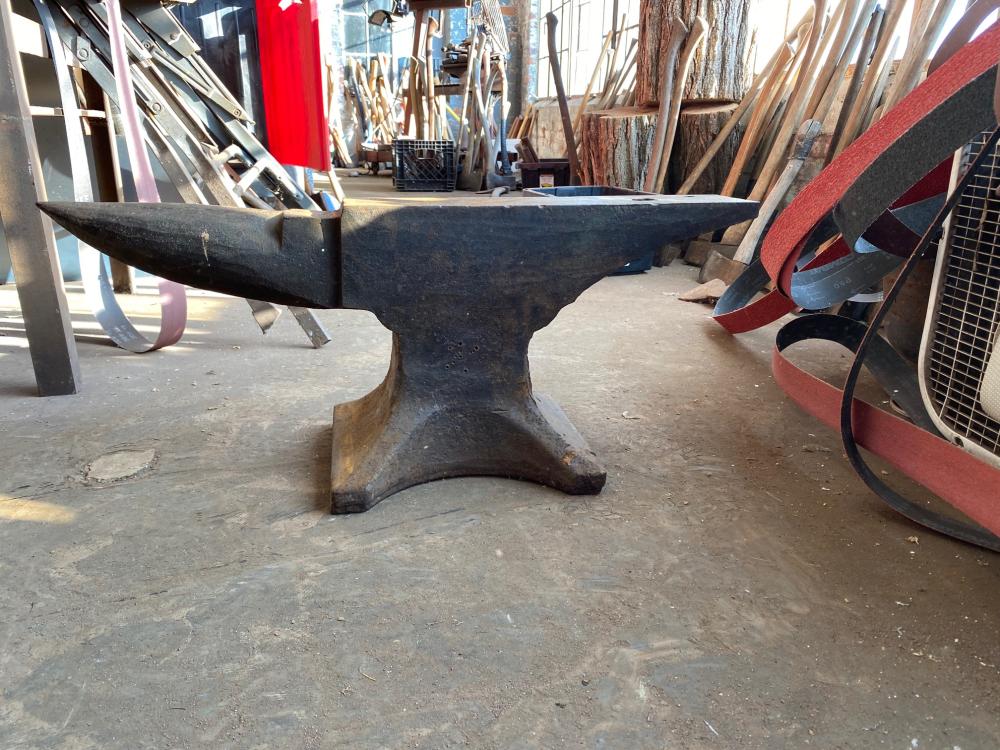
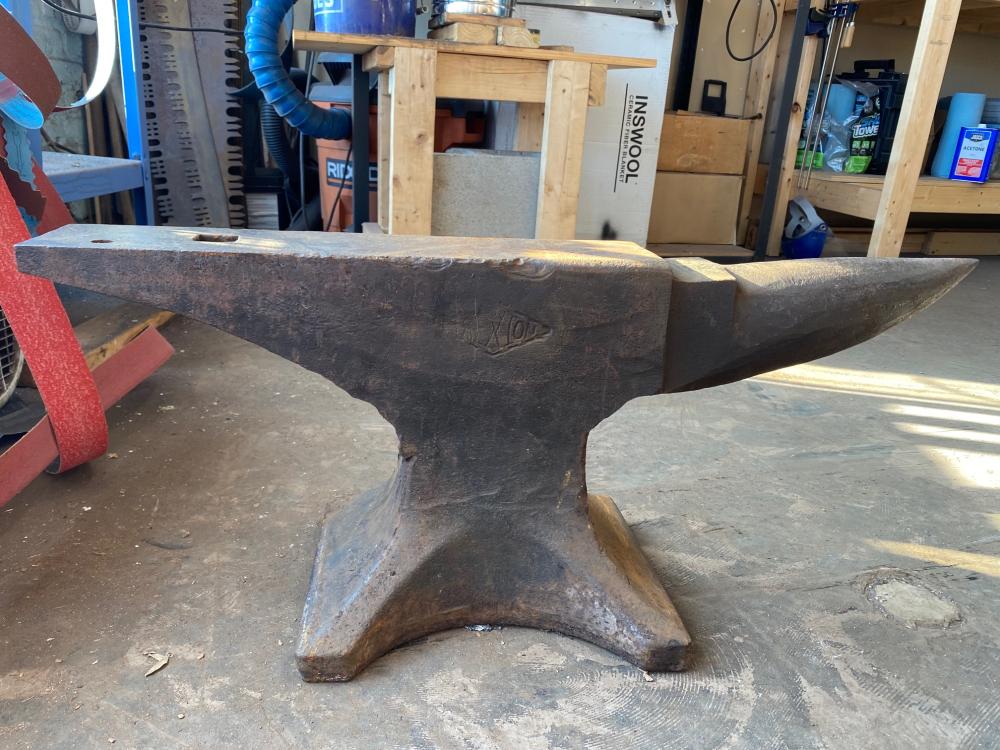
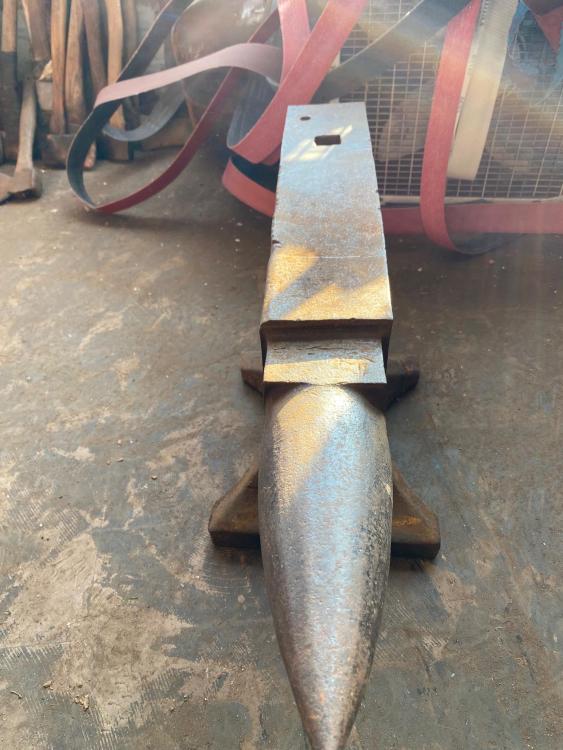
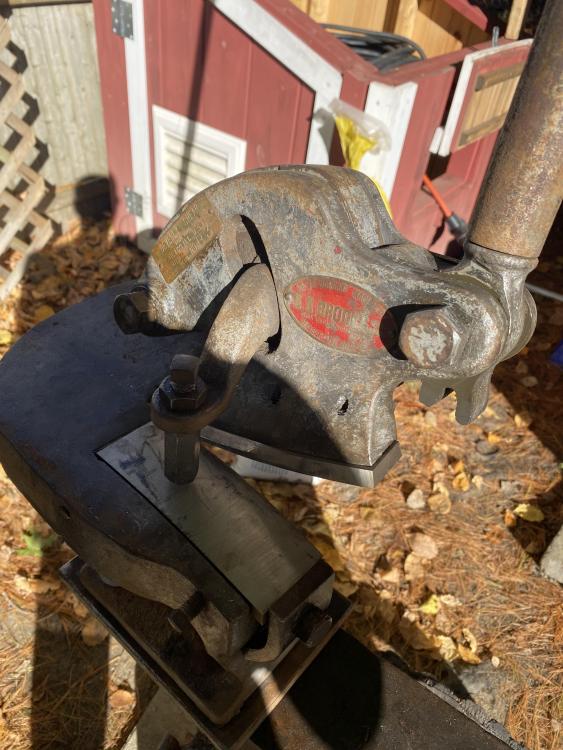

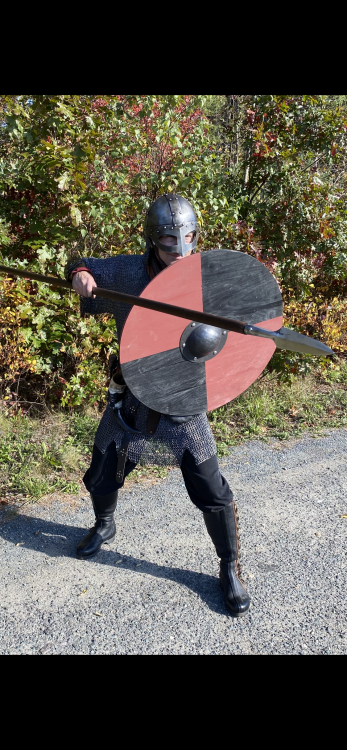
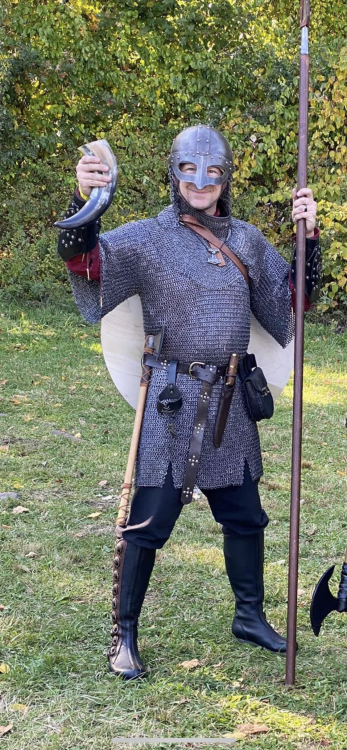
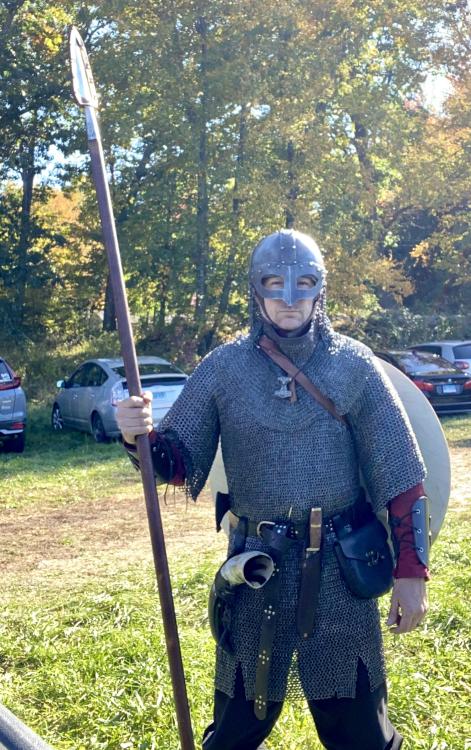
List of makers currently producing anvils
in Anvils, Swage Blocks, and Mandrels
Posted
I love this thread because I see so many people acting like anvil-making is a lost art and anvils made prior to, say, 1940, are superior to modern anvils. Sure, the mid 20-th century onward saw a lot of lesser quality anvils, but the technology is by no means lost.
A hardened face on a wrought body does NOT a superior anvil make.
I've got more anvils than I need (a 173 lb Fisher, and a 120 and 190 ln Trentons) but I look forward to the day when my forge proceeds allow me to buy a new German 100 kilo anvil.